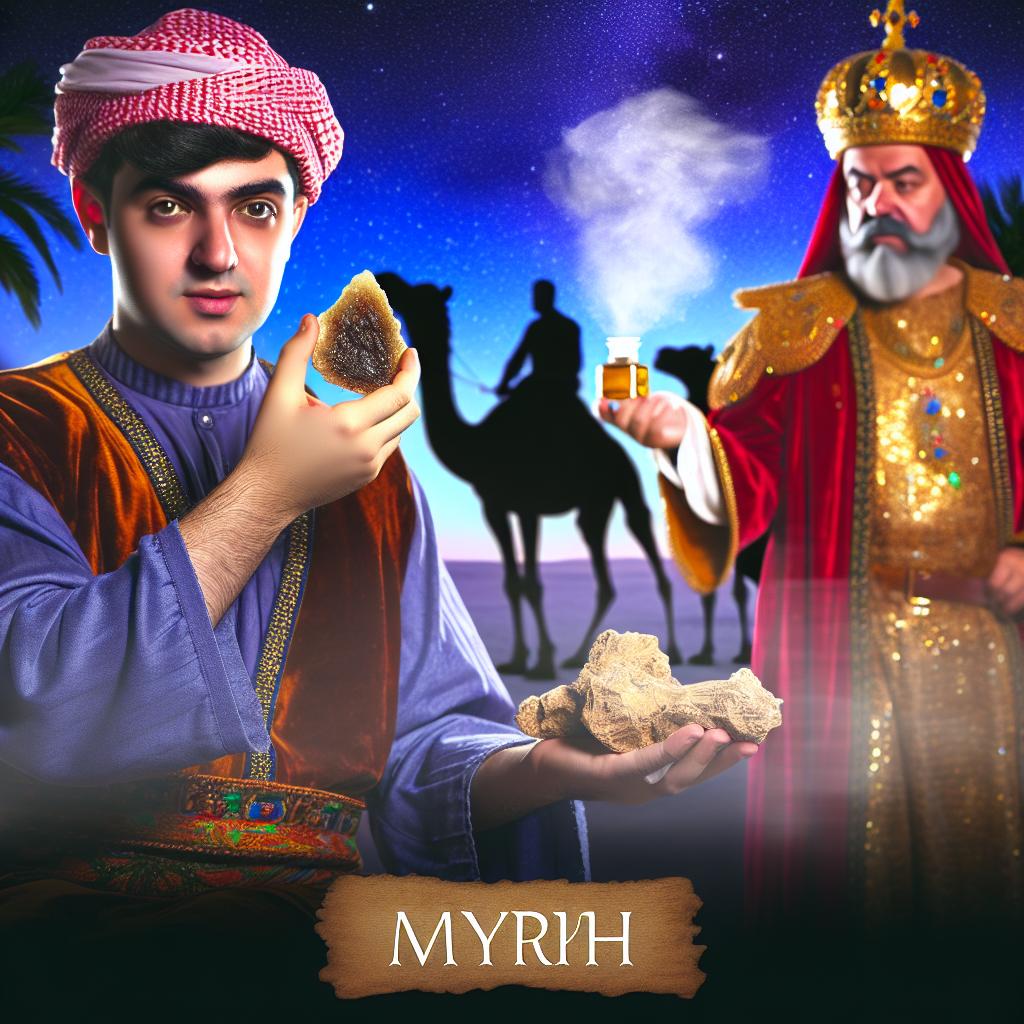Content:
The Historical Significance of Myrrh
Myrrh, a resin extracted from the Commiphora tree, has been a notable substance throughout history, revered for both its aromatic and medicinal properties. This naturally occurring resin has held a prominent position in various cultures over the centuries, primarily due to its profound associations with spiritual and ceremonial purposes.
Ancient Uses and Trade
In the ancient world, myrrh was considered extremely valuable and was widely utilized in religious ceremonies. Historical records reveal its significance in ancient Egypt, where it was an essential component used in embalming practices. The preservative qualities of myrrh made it ideal for mummification, thus playing a critical role in the ritual of preparing the deceased for the afterlife. Moreover, myrrh was frequently included in offerings to deities and employed in the formulation of incense, further underscoring its divine and sacred connotations.
The extensive trade routes of antiquity were heavily dependent on the exchange of goods like myrrh, which was considered a precious commodity. Myrrh was traded across the Arabian Peninsula, extended to India, and found its way into the classical civilizations of Greece and Rome. This trade not only facilitated economic interactions but also enabled cultural exchanges between diverse regions, linking them through the shared significance attributed to myrrh.
Myrrh in Religious Texts
The mention of myrrh in religious texts across various faiths highlights its spiritual importance. In Christian tradition, myrrh is famously recognized as one of the gifts presented to Jesus by the magi, alongside gold and frankincense. Myrrh’s inclusion symbolizes suffering and mortality, aspects central to Christian doctrine concerning human life and the divine. Furthermore, within the Hebrew Bible, myrrh is referenced in the Song of Solomon and is listed as a key ingredient in the preparation of the sacred anointing oil used within tabernacle practices, signifying its revered status and sacredness.
Medicinal Attributes of Myrrh
Beyond its cultural and religious importance, myrrh is also celebrated for its medicinal attributes. For centuries, it has been a staple in traditional medicine, utilized for a variety of therapeutic purposes. Myrrh was commonly applied to treat infections and skin conditions, thanks to its natural antibiotic properties. It also served as an anti-inflammatory agent and pain reliever. Recent scientific studies have begun to explore the bioactive compounds present in myrrh, with findings suggesting that these compounds hold significant potential for pharmaceutical applications. These studies continue to validate the traditional uses of myrrh, while also opening new avenues for its modern medicinal use.
Contemporary Relevance
In today’s world, myrrh remains a substance of intrigue and value, especially within the fields of aromatherapy and natural medicine. Its fragrant scent is still harnessed in the making of incense and perfumes, testifying to its enduring appeal. Additionally, ongoing scientific inquiry aims to discover more about the health-promoting properties of myrrh, endeavoring to harness these attributes for contemporary welfare.
For those interested in delving deeper into this ancient resin, a wealth of resources exists both in libraries and online. These resources span articles on the historical impact of myrrh as well as reports from contemporary scientific studies investigating its applications and benefits.
In summary, myrrh is a substance with a rich historical narrative, traversing various cultures and historical epochs. Its perennial relevance today attests to its enduring allure, positioning it as an object of both historical fascination and scientific investigation, appreciated for both its past significance and present potential. Through understanding myrrh’s historical context and continued applicability, we gain insight into the way ancient knowledge and modern science can intersect and coexist.
